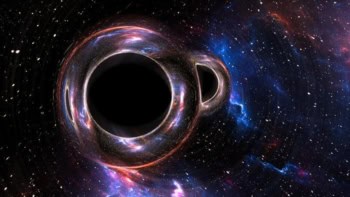Some variants of string theory predict new forces that modify the strength of gravity at submillimetre distances. An experiment carried out by John Price and colleagues at the University of Colorado in Boulder has placed new constraints on such theories by measuring the gravitational interaction between two closely spaced masses. The researchers found that Newton's inverse square law holds true for distances down to 0.1 mm (J C Long et al. 2003 Nature 421 922).
String theory – currently the leading candidate for a unified theory of all the forces – predicts that there are six extra spatial dimensions in addition to the three we are familiar with. Theorists believe that these extra dimensions are curled up into small spaces, and it has been suggested that they may generate forces with strengths comparable to gravity over distances of about 0.1 mm.
Making precise measurements of gravitational interactions at such distances is difficult because gravity is much weaker than electrostatic and magnetic forces at small scales. The most precise experiment to date was that carried out by Eric Adelberger and co-workers at the University of Washington in 2001, who employed a variation of the torsion balance used by Henry Cavendish to measure the gravitational constant in 1798. The Washington researchers measured the strength of gravity down to a distance of 0.2 mm but found no deviation from the inverse square law.
In contrast, the apparatus used by Price and colleagues is quite different to the Cavendish balance. They monitored the mutual attraction between two thin sheets of tungsten, which they placed 0.108 mm apart. They vibrated one of the sheets – the source mass – at the resonant frequency of the second sheet – the detector – and monitored the resulting motion of the detector using an electric probe. The detector was heat treated so that it dissipated very little energy, thereby maximising the sensitivity of the experiment. Furthermore, the experiment was constructed so that the resonant frequency of the detector – just over 1000 Hz – was high enough to eliminate low-frequency interference, such as vibrations in the floor.
By not recording any deviation from Newton’s law, the Colorado researchers have placed new restrictions on the nature of “moduli” forces predicted in some variants of string theory, such as the “string dilaton”, “radion” and “strange modulus” forces.
“If a new force were found it would have a large impact on physics since the whole subject is built on the four known forces, ” says Price. “It is possible that some day string theory will be understood well enough to make very precise predictions about new forces such those as we seek. Until then, it’s a fishin’ expedition.”



